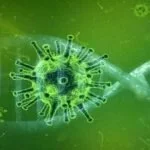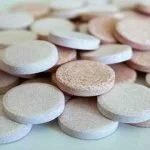Major Mineral
Seven Major Mineral are required in large amounts of over 100 mg/day.
The 7 types of Major Mineral are : – Calcium , phosphorus , sodium , chlorine , potassium , magnesium and sulphur.
Major Mineral :- Calcium
It occurs in large proportion in the body. Approximately 99 % of the calcium is present in bones and teeth and remaining 1% in soft tissues and fluids.
It reserved in the bones can be utilized whenever required to maintain normal concentration in the plasma. The bones provide a rigid framework for the body and reserves of calcium.
Function
- The Major Mineral Calcium is required for the formation of bones and teeth.
- It plays an essential role in the clotting of blood.
- Ionic calcium effects neuro muscular excitability of voluntary as well as involuntary muscles.
- It increases the permeability of cell membrane.
- It helps to absorb Vit. B12 in the ileum
- It is one of the major factors in regulation of the heart.
- It activates number of enzymes including lipase and adenosine.
- Faulty absorption of fats and fatty acids form insoluble calcium salts, which are excreted.
- Lactose increases calcium absorption.
- High protein intake increases absorption.
Source
- Milk and milk products excluding butter, ghee and cream.
- Ragi, green leafy vegetables especially drumstick leaves , cabbage , curry leaves , carrot and cauliflower tops and amaranth.
- Small dried fish , nuts and oil seeds such as gingelly seeds.
- Betel leaf with sled lime is a rich source.
Major Mineral :- Phosphorus
It is approximately 1% of the body weight. Phosphorus in inorganic combination with calcium forms bones and teeth. In bones the proportion of calcium and phosphorus is 2:1 but soft tissues contain much high content of phosphorus as compared to calcium.
This is available in organic combination. It is available in inorganic form as phosphoric and in organic forms phospholipids and nucleoprotein.
Function
- Formation of bones and teeth. It is combines with calcium to form insoluble compounds to give strength and rigidity to bones as well as teeth.
- Constituent of coenzyme.
- Important part of cell constituents. It is essential for the formation of phospholipids. These phospholipids help to regulate the transportation of solute in the cell.
- It is essential for carbohydrate metabolism as phosphorylation of glycogen requires inorganic phosphorus and phosphoric esters.
- Its is also essential constituents of nucleic acid and nucleo proteins which are integral parts of the cell nucleus.
Sources
It is widely distributed in both plants and animal foods. Diets rich in protein and calcium provide sufficient phosphorus. Eggs , milk , meat , fish and flour are excellent sources of phosphorus.
Whole grain cereals are good source but fruits and vegetables as whole are low in phosphorus content.
Deficiency
A deficiency of this element is very rare in human beings because diets having sufficient cereals are seldom inadequate in this nutrient. The deficiency is common in animals and causes stiff joints and bones.
Major Mineral :- Sodium
It is a common salt is a daily ingredient in our diet. Extracellular fluid contains sodium for the maintenance of normal osmotic pressure and water balance.
Function
- The Major Mineral Sodium along with chloride are major constituents in the extracellular fluid responsible to maintain osmotic pressure.
- It maintains normal irritability of nerves and helps in muscle contraction.
- Regulates the alkalinity and acidity of body fluids along with the mineral chloride.
- Regulates cell permeability of substances into and out of the cell.
- Maintenance of heart beat is related with sodium.
Source
Fresh meat , fish , poultry , egg and milk are the sources of sodium. Foods from plant origin are poor in sodium.
Deficiency
It is seen in people engaged in heavy physical activities such as farm and mine workers. It may also occur in cases of severe vomiting. It results in weakness, nausea and muscle cramps. It can be treated by adding salt to water and if this is not retained could be given.
Major Mineral :- Potassium
It is present as the major electrolyte in all body cells. Plasma contains very small amount of potassium but large amount of it is present in red blood cells.
Function
- It regulates the acid-base balance like sodium.
- It helps in transmitting nerve impulses and contraction of muscle tissues.
- As a component of all cells in the intracellular fluid it helps in regulating the water balance along with sodium.
- Potassium ion increases the relaxation of heart muscles.
Source
Meat , fish and poultry foodstuffs are good sources of potassium. Fruits , vegetables and whole grain cereals are especially high in potassium. Banana , potatoes, tomato , carrots , grape fruit juice.
Major Mineral :- Magnesium
About 60 percent is found along with calcium and phosphorus in the bones and teeth. The remaining 40 percent is present in tissues and body fluids .
Function
- It is present mainly in the intra cellular fluid and helps in maintaining gluid balance along with sodium, potassium and calcium.
- It helps in transmission of nerve impulses, muscle contre actions and regulation of the heart beat.
- It acts as a co-factor in many metabolic reactions.
Sources
Milk , cheese, fish, meat, whole grains , pulses and nuts contain magnesium.
Related posts:
Minor Mineral These are required in small quantities, less than a ...
What is Minerals Minerals constitute 4% of the total body weight. I...
Classified of Nutrition It is broadly Classified of Nutrition into ...





